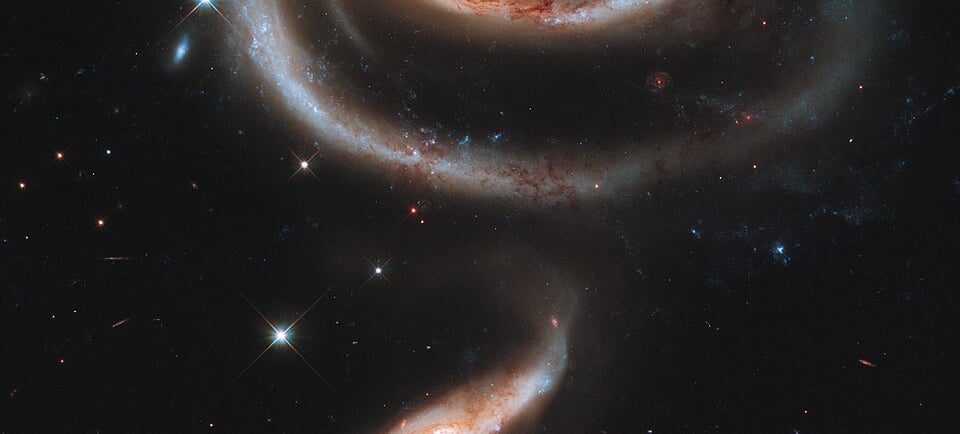The Captivating Interaction of ARP 273: The Cosmic Rose


Unraveling ARP 273: The Rose in the Cosmos
The universe is replete with stunning phenomena that intrigue astronomers and space enthusiasts alike. One such captivating wonder is the interacting galaxy pair known as ARP 273, often referred to as 'the Rose.' This celestial duo consists of two spiral galaxies, with the prominent one being UGC 1810, which exhibits a uniquely distorted shape resembling a blossoming flower. The gravitational influence of its companion, UGC 1813, plays a pivotal role in the intriguing morphology of this galactic interaction.
The Anatomy of UGC 1810: A Spiral Delight
UGC 1810, the larger member of this pair, is characterized by its striking spiral structure. The tidal interactions between UGC 1810 and UGC 1813 result in a disk that is gravitationally distorted, giving rise to the flower-like shape that has captured the imagination of many. This distortion is not merely aesthetic; it reveals the complexities of gravitational dynamics at play when galaxies come near each other. The gravitational pull exerted by UGC 1813 causes the material within UGC 1810 to shift and swirl, mimicking the delicate contours of a blooming rose.
The Scientific Significance of ARP 273
Studying ARP 273 offers astronomers valuable insights into the processes of galactic interaction, evolution, and star formation. As these galaxies engage in their cosmic dance, the tidal forces lead to an exchange of gases and stars, triggering new bursts of star formation. This phenomenon is instrumental in advancing our understanding of how galaxies evolve over time.
The beauty of ARP 273 lies not just in its appearance but also in the cosmic lessons it imparts. Investigating such interacting pairs enhances our comprehension of the dynamics between galaxies and the life cycle of cosmic structures. Observations of ARP 273 have implications for other galaxies exhibiting similar characteristics, enriching the field of astrophysics.
In conclusion, ARP 273 (the Rose) stands as a testament to the intricate ballet of galaxies within the universe. The interaction between UGC 1810 and UGC 1813 not only captivates the eye but also fuels scientific inquiry, reminding us of the elegant complexities of the cosmos. Continued study of this celestial pairing will undoubtedly unveil further secrets, enriching our grasp of the vast universe that surrounds us.
